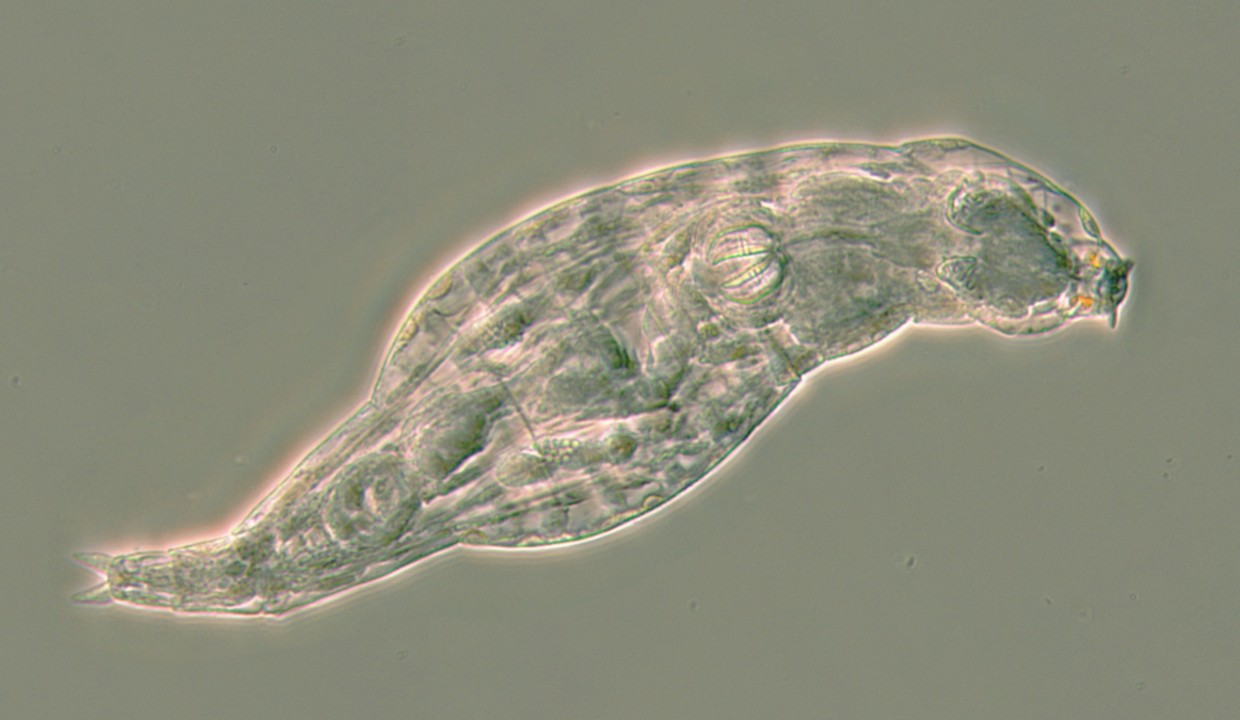Tiny animals steal antibiotic recipes from bacteria, study finds
A group of small freshwater animals protect themselves from infections using antibiotic recipes stolen from bacteria, according to new research
/filters:format(webp)/filters:no_upscale()/prod01/cdn/media/stirling/news/news-centre/2024/july/iStock-1491347856.jpg)
A group of small freshwater animals protect themselves from infections using antibiotic recipes stolen from bacteria, according to new research that could help in the development of medicines.
The little-known creatures called bdelloid rotifers – which means crawling wheel animals – live in moss, ponds, and soil. They have a head, mouth, gut, muscles, and nerves yet they are smaller than a hair’s breadth.
When these rotifers catch an infection, they switch on hundreds of genes that have been copied into their DNA from bacteria and other microbes, the study found. Some of these genes produce antibiotics and other protective chemicals against the disease.

This rotifer has just survived a life-threatening infection. When a fungal disease attacked, she switched on hundreds of genes that her ancestors copied from microbes, including antibiotic recipes stolen from bacteria (credit: C. G. Wilson 2019).
The study was led by Dr Chris Wilson of the University of Oxford and co-authored by Dr Reuben Nowell of the University of Stirling. Dr Wilson said: “When we translated the DNA code to see what the stolen genes were doing, we had a surprise. The main genes were instructions for chemicals we didn’t think animals could make — they looked like recipes for antibiotics.”
Earlier research found that rotifers have been picking up DNA from their surroundings for millions of years, but the new study was the first to discover them actively using these genes against diseases. No other animals are known to steal genes on such a large scale.
Antibiotics, like penicillin, are essential to modern healthcare, but most of them were not invented by scientists. Instead, they are produced naturally by fungi and bacteria in the wild, and humans can make artificial versions to use as medicine.
Important clues
The scientists think that rotifers could give important clues in the hunt for future drugs to treat infections caused by bacteria or fungi in humans and other animals.
Antibiotics are becoming less effective because the disease-causing microbes have evolved to become resistant and no longer respond to treatment. The World Health Organisation recently sounded the alarm, warning in a June report of the “pressing need” to develop new antibiotics to counter the threat of resistance.
Dr Reuben Nowell, an expert in Animal Evolutionary Biology in the University of Stirling’s Faculty of Natural Sciences, said: “The recipes the rotifers are using look different from known genes in microbes.
“They are just as long and complicated, but parts of the DNA code have changed. We think the recipe has been altered by a process of evolution to make new and different chemicals in the rotifers. That’s exciting because it might suggest ideas for future medicines.”
Safer drugs
One problem with developing new drugs is that many antibiotic chemicals made by bacteria and fungi are poisonous or have side effects in animals. Only a few can be turned into treatments that safely clear harmful microbes from the human body.
If rotifers are already making similar chemicals in their own cells, the researchers think they could lead the way to drugs that are safer to use in other animals, including people.
Dr Nowell thinks there is much more to learn from rotifers and their stolen DNA. He added: “We found that rotifers are using hundreds of genes that aren’t seen in other animals. The antibiotic recipes are exciting, and some other genes even look like they have been taken from plants.
“The findings are part of a growing story about how and why genes get moved between different kinds of life.”
The paper Bdelloid rotifers deploy horizontally acquired biosynthetic genes against a fungal pathogen was published in Nature Communications.
